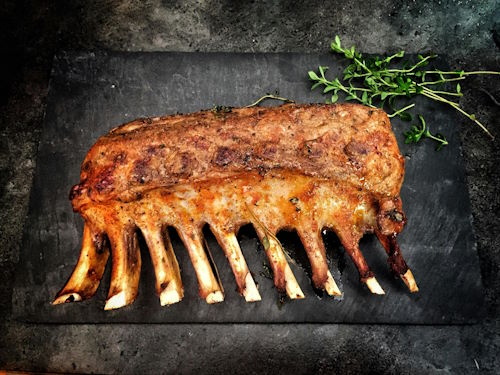Today’s popular paleo diet is supposedly modeled on the way humans ate hundreds of thousands of years ago. But a new study questions this premise.
The main appeal of the paleo (Pleolithic) diet is that it closely resembles the eating habits of ancient humans who excelled at hunting animals but lacked the ability to harvest or process grains.
BREAKING: This Keeps Your Blood Sugar Below 100 - Even When You're Eating Sweets!
Scientists examined tools used to prepare food hundreds of thousands of years ago and found substances indicating that ancient humans ate not only meat, including rodents and water fowl, but also a range of plants such as grasses, nuts, wheat, oats, rye, barley, water chestnuts, and water lilies.
“Fad diets like the paleo diet gained popularity due to their appeal to a ‘simpler, natural’ way of eating, grounded in the romanticized notion that mimicking the diet of our ancient ancestors could lead to optimal health,” says Jose Ordovas, PhD, a senior scientist and professor of nutrition and genetics at the Gerald J. and Dorothy R. Friedman School of Nutrition Science and Policy at Tufts University in Boston.
The paleo diet markets itself as a return to a pre-agricultural lifestyle, avoiding processed foods like grains and legumes and filling up instead on meat, fish, fruits, vegetables, and nuts, adds Dr. Ordovas, who wasn’t involved in the new research.
“However, this study underscores the significant diversity in early human diets, which included grains, legumes, and various plant species — foods largely excluded from modern paleo frameworks,” Ordovas says.
Ancient Tools Show Our Ancestors Ate a Varied Diet
For the study, scientists examined maces and anvils made from basalt, a type of rock formed from rapidly cooling lava at the Earth’s surface, that ancient humans used to crack and crush plant foods. Researchers found evidence that these tools were used to prepare food using a variety of plants, grains and legumes, as well as rodents and birds.
Knowing that early humans used basalt tools to process grains and legumes “opens a new chapter in the study of early human diets and their profound connection to plant-based foods,” Dr. Ahituv said in the statement.
It may also encourage some people to try a less rigid version of a paleo diet that allows for the consumption of whole grains and beans, says Connie Diekman, RD, LD, a food and nutrition consultant and past president of the Academy of Nutrition and Dietetics, who wasn’t involved in the new study.
“Rigidity can lead to diets failing,” Diekman says.
TRENDING: Viagra Obsolete: New Invention Cheaper, Safer, Faster
Ancient Humans Likely Followed a Mediterranean-Style Diet
Ancient humans probably built a lot of flexibility into their eating habits by necessity, to account for what they could find to eat at any given time, Ordovas says.
Interestingly, the way ancient humans ate looks less like a paleo diet and more like another diet popular today in large part because of its ability to adapt to a wide range of cultural and personal food preferences — the Mediterranean diet, Ordovas says.
“The Mediterranean diet, which remains the No. 1 recommended diet, is built around plant foods along with moderate amounts of lean animal foods and low-fat or fat-free dairy,” Diekman says.








